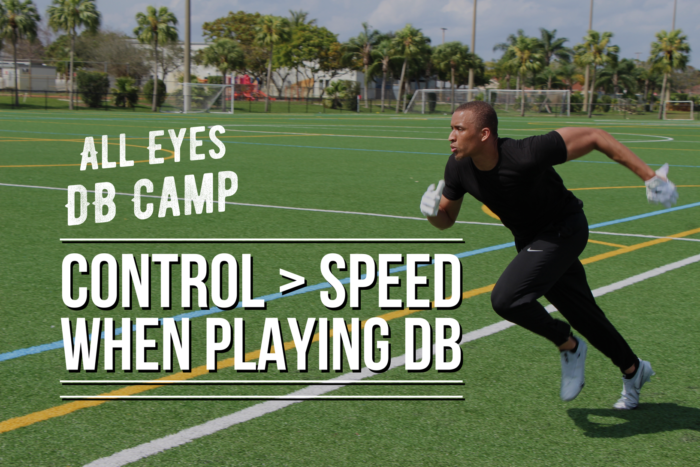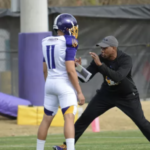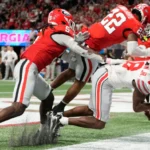Enhancing Speed in the Offseason: Training Tips for Defensive Backs
Speed is a vital attribute for defensive backs in football, enabling them to keep up with receivers, close gaps, and make crucial plays. To excel on the field, defensive backs must prioritize speed training during the offseason. This article provides valuable insights and training tips to help defensive backs enhance their speed, explosiveness, and overall athleticism in preparation for the upcoming season. By incorporating these strategies into their offseason regimen, defensive backs can elevate their game and make a significant impact on the field.
Develop Lower Body Strength
Building lower body strength is fundamental for improving speed. Focus on exercises like squats, lunges, deadlifts, and calf raises to develop strength in the hips, glutes, quads, and hamstrings. These compound exercises not only enhance power but also contribute to overall stability and explosiveness. Incorporate plyometric exercises like box jumps, lateral hops, and single-leg bounds to further enhance lower body strength and explosive power. You don’t need a weight room to do those plyometric exercises either. A simple work out of 10 yard broad jumps followed by a 10 yard walk for the length of a football field could do the trick.
Incorporate Sprint Training
Integrating sprint training into the offseason program is crucial for improving speed. Perform various sprint drills such as short sprints (10-30 yards), flying sprints, uphill sprints, and resisted sprints using sleds or resistance bands. Focus on maintaining proper form, including a forward lean, driving knees, and pumping arms for maximum efficiency. Gradually increase intensity and volume as the offseason progresses, incorporating interval training and timed sprints to simulate game-like scenarios. Be sure to have adequate rest in between sprints when training for speed. A good rule of thumb is rest 1 minute per 10 yards sprinted. Keep in mind when training for speed, you are not just looking recovery in our breathing but recovery of our central nervous system. The energy for sprinting comes from there so full recovery is necessary to complete an additional sprint at maximum velocity.
Enhance Acceleration and Deceleration
Speed in football is not just about top-end sprinting; it also involves quick acceleration and effective deceleration. Incorporate exercises that specifically target these aspects, such as shuttle runs, agility ladder drills, and cone drills. These exercises help improve the ability to change direction rapidly, accelerate from a stationary position, and come to a controlled stop. Developing proper technique and body control during acceleration and deceleration can give defensive backs a significant advantage on the field.
Focus on Hip Flexibility and Mobility
Hip flexibility and mobility are essential for defensive backs to maintain an optimal stride length and range of motion. Include dynamic stretching exercises like leg swings, hip circles, and hip flexor stretches in your warm-up routine. Additionally, performing exercises like hip rotations, lateral lunges, and glute bridges can help improve hip mobility. Enhanced hip flexibility allows for better body control, quicker change of direction, and a more efficient running stride. This is where most defensive backs, especially young ones, come up short. Of all the positions on the football field, defensive back involves the most violent and no traditional stress on soft tissue. This means groin and hip flexor injuries are most common for DBs. Incorporating a great stretching program while boring will keep you away from the soft tissue injuries that cause you to have to take a break from all of the other exciting stuff. You can’t win if you are not in. Stay healthy during training.
Implement Agility and Footwork Drills
Agility and footwork drills are crucial for defensive backs to maintain quick reactions and nimble movements on the field. Incorporate ladder drills, cone drills, shuttle runs, and reaction drills to enhance agility, coordination, and footwork. Focus on precise foot placement, quick transitions, and maintaining balance throughout each drill. Consistent practice of these drills helps defensive backs improve their ability to mirror receivers, change direction fluidly, and react to the ball effectively. You will also get a good amount of this work in your defensive back drills as well. Check the All Eyes DB Camp Area for DB workouts that will help you in this area.
To stand out as a defensive back, improving speed and agility is of utmost importance. By incorporating targeted training strategies into their offseason routine, defensive backs can significantly improve their speed, explosiveness, and overall athleticism. Developing lower body strength, incorporating sprint training, focusing on acceleration and deceleration, improving hip flexibility and mobility, and practicing agility and footwork drills are key elements to address. By dedicating time and effort to these aspects during the offseason, defensive backs can elevate their game, make impactful plays, and be valuable assets to their teams on the field.
Chad Wilson is the owner of All Eyes DB Camp and author of "101 DB Tips". He played college football at the University of Miami and briefly in the NFL for the Seattle Seahawks. Over his 15 year high school football coaching career, he tutored over a dozen Division I defensive backs and as a trainer has worked with NFL All Pros, first round draft picks, college football All Americans and Top 10 ranked high school football prospects.









